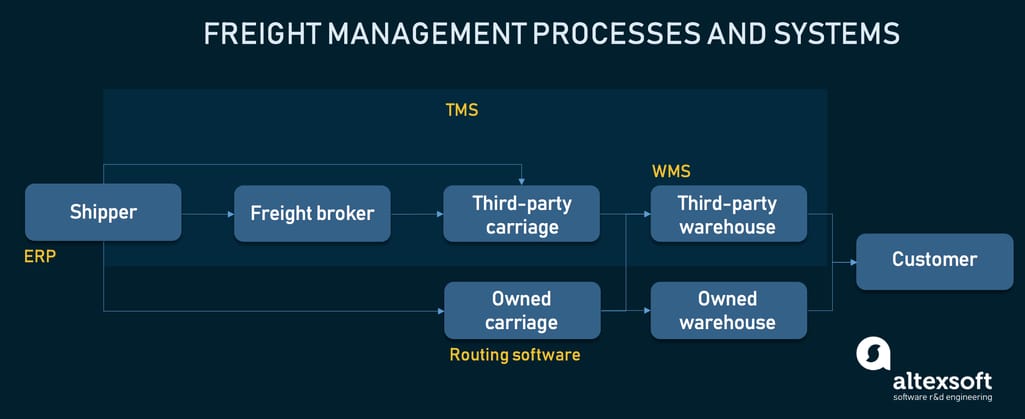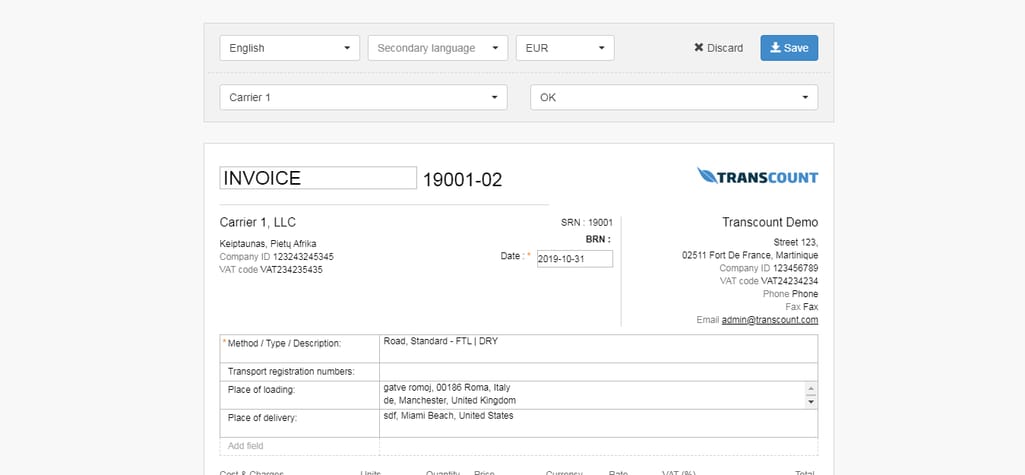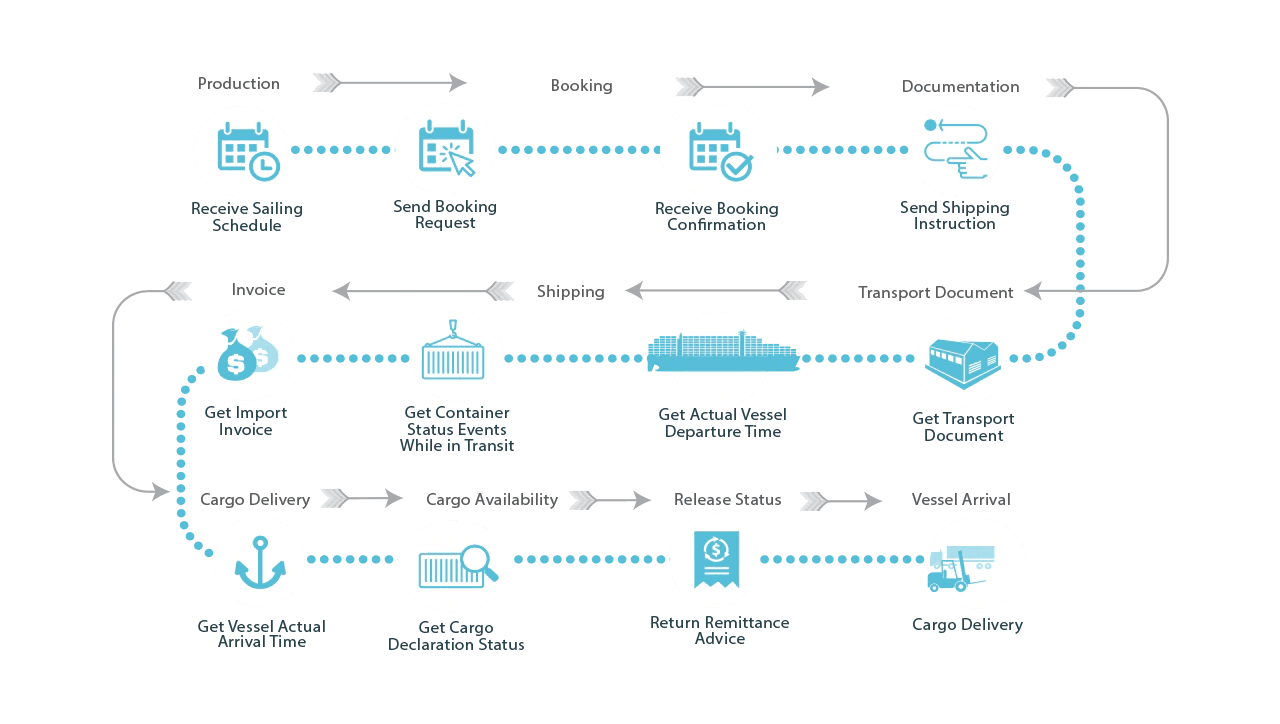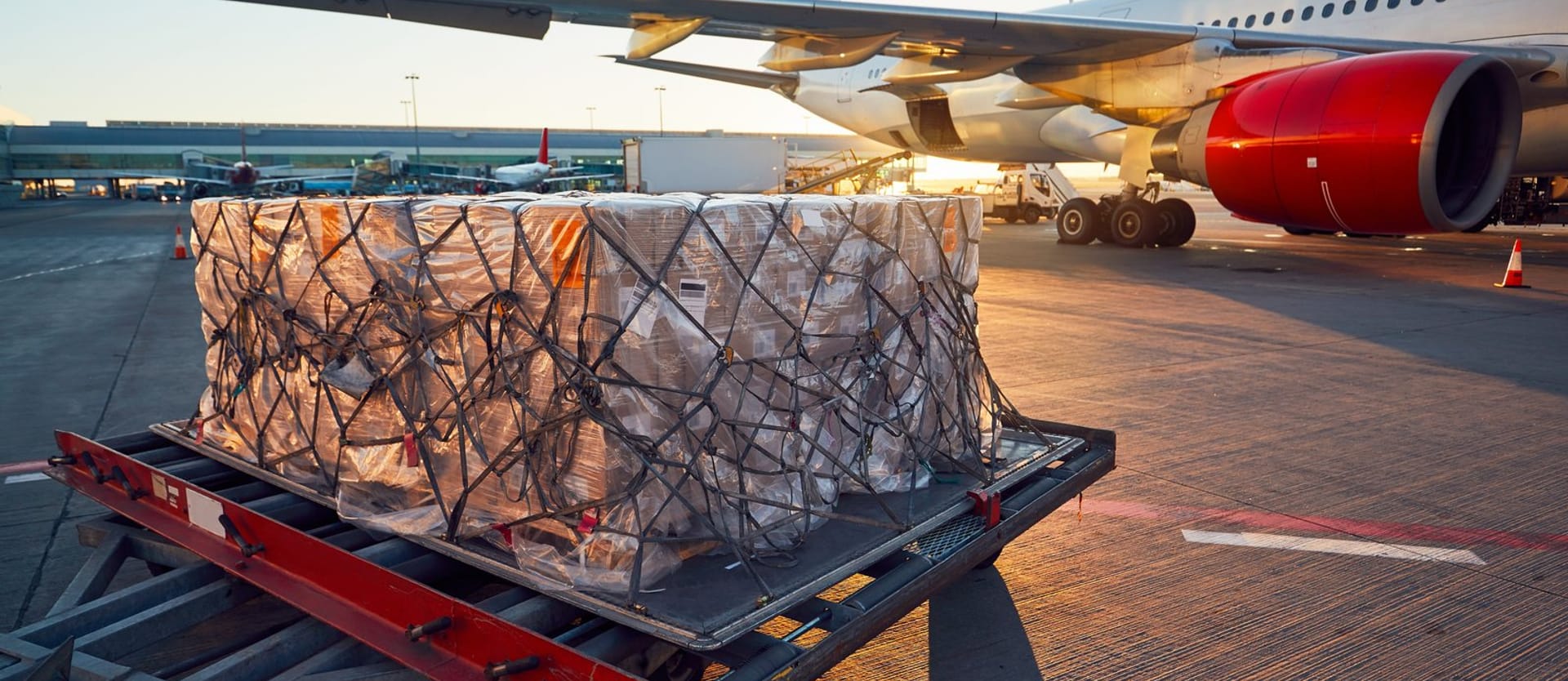Just like many other industries, transportation is experiencing a difficult year. As a result of panic shopping at the start of the pandemic, trucking volumes increased by 30 percent, then plummeted, and only now has started to increase again. Rail, ocean, and last mile deliveries are down by at least 20 percent. Increased labor costs and declining freight rates, demand for faster shipping with fewer orders, overall higher carrier margins… these are strange times that already affect operations.
Here, we'll want to talk about modern approaches to freight management and how retailers and shippers can use technology to cut costs, enhance customer experience, and deliver connectivity within your trade network.
What is freight management?
Freight management is the process of overseeing and managing the delivery of goods. Any company, large or small, that deals with cargo movement has to decide how they’re going to deliver freight on time to the right destination, and at the lowest cost possible. In the transportation process, such companies are called shippers, even if they employ third parties to ship their goods.
See the role of freight management in the whole supply chain ecosystem
Freight management is a part of the logistics process, which covers the whole supply chain operation from warehousing to supplier relationships and inventory control. As a shipper, you can handle all of these processes or outsource some of them, for example, freight management. On the image above you can see the whole list of tasks in logistics, but what operations make up freight management?
Carrier selection. If you’re using a third-party carrier, you need to pick the right one, establishing rates, terms, and expectations.
Route optimization. Find the most efficient route and choose the transport mode(s), assigning vehicles, drivers, and balancing the load. This is important for the owned fleet as your carrier will choose the best routes for you.Documentation and regulations management. This includes preparing the appropriate paperwork, insurance management, and ensuring the government compliance of goods and transportation.
Tracking and tracing shipments. This involves ensuring freight visibility and transparency. A carrier usually provides vehicle tracking but you can also track each package and container individually.
Data collection and analytics. Gain insights from collected data and optimize the shipping process.
Let’s overview each of these tasks, how you can plan them, and what software systems support them.

The overview of freight management processes and corresponding software
Selecting and managing vendors and carriers
Associated software: TMS, ERP
Depending on your goals and capabilities, you can manage freight operations in different ways.
Having a private carriage. Some companies decide that the cheapest or most reliable way to transport their goods is to purchase their own fleet and manage drivers on their own. This is particularly relevant for brands with high product volumes or those with less common final destinations. This model mostly concerns road transport, although large companies may own their own aircraft or ships.
Using third-party carriers. Many businesses use 3PLs to fulfill their transport operations. These can be common or contract carriers. Common carriers like FedEx, DHL, or UPS provide transport services to the general public. In turn, contact carriers work only with specific shippers based on the contract. Also known as Dedicated Contract Carriage (DCC), in this increasingly popular model, you pay a flat fee per day and per truck and can dispatch goods at any time or on a regular basis.
You can also employ middlemen to connect with carriers and help arrange the transportation: freight brokers and freight forwarders.
Freight brokers don’t actually work with cargo - they help shippers connect to carriers and find the best deals for them. Freight forwarders, however, take a more active role - they can do packaging, warehousing, and paperwork preparation. Sometimes they own a fleet or containers, and ship under their own bills of lading. Unlike most freight brokers, they often operate international freight. In the US, both brokers and forwarders should be licensed with the Federal Motor Carrier Safety Administration (FMCSA).
Relationships with carriers, brokers, and forwarders are usually managed using a transportation management system (TMS) - a software tool for planning and executing transportation operations, linked with an ERP from the inside and connected to a carrier’s or 3PL’s system from the outside. Here’s a common scenario on how it works:
- When you have an order that needs to be delivered, the system creates a pickup request. Some requests are scheduled up front, some work on a one-off basis.
- The system then pulls out the list of suitable and available carriers depending on chosen parameters. You then choose the carrier manually or allow the system to auto-pick the cheapest or best performing option. If you’re using a freight broker, they will do this for you using the same method.
- A broker, a TMS, or a shipper can then check if the carrier is available and schedule the load and pickup time.
- A shipper/broker receives information about the load distribution, assigned driver and vehicle, confirms it, and the driver signs the (digital) bill of lading.
- A shipper can track and trace the package en route and provide this information to the customer as well.
- After the consignee accepts the shipment, the carrier is invoiced for their services.
Route, load, and transport optimization
Associated software: route optimization tool, TMS
Whether a shipper operates via a broker, 3PL, or uses a private fleet, it’s costing them money to run half-empty containers or spend hours in traffic. There are three main problems carriers and shippers solve to operate more effectively.
Route and schedule optimization
There are a few Vehicle Routing Problems that businesses solve all the time. Depending on your specific constraints, types of destinations, vehicle limitations, and even traffic, you can apply algorithms to build routes for faster delivery. Routing software like Google Optimization Tools or MapQuest cover tons of different scenarios and can be integrated into your TMS via API.

OptimoRoute’s interface for planning routes
Load planning
The goal of load planning is to transport as much cargo as possible with the lowest number of vehicles/trailers/containers. It goes hand in hand with route optimization because you want to design the right hierarchy of goods to unload faster. Besides the route, the ideal truckload should be calculated based on size, weight, class, warehouse, etc. Usually, you can access this information in load planner tools built in directly to TMSs. Of course, many of these constraints concern specifically the less-than-truckload (LTL) shipping when carriers combine goods from different shippers to fill the trailer.
Multimodal and intermodal optimization
Multimodal shipping or using a combination of two or more modes of transportation is often faster and cheaper, even within the same country. For shippers who use third-party carriers, it’s also no different from single-mode transportation since the movements remain centralized under the control of the same vendor.
Another option is intermodal transportation, where shippers choose different carriers for each part of the route preferring the choice of the lowest rates, transit schedules, or even sustainability. Of course, this puts more responsibility on shippers themselves, who would also need to coordinate delays and manage several contracts.
Documentation and regulations management
Associated software: TMS, eBL provider, accounting software
The transportation industry is heavily regulated and involves tons of paperwork. Consequently, paperwork comprises a lion’s share of all freight management work.
Example of a template-based freight document management system. Source: Transcount
Claim management
Freight claims ensure that the carrier, freight forwarder, or any 3PL has monetary responsibility for the loss or damage of your shipment. Each carrier has different rules for filing freight claims; they can also be different depending on whether it’s a domestic or international shipment. Either way, you want to establish a standardized digital process for claim management so you can react to damage within the standard 3-days timeframe and receive reimbursements quickly. This means filing a claim digitally, preferably via a system connected to the carrier, and having supporting documents like bills of lading on hand.
Tariffs and regulations management
Most of the transportation documents concern international, air, and sea shipping. Included are such papers as
- waybills,
- bills of lading,
- packing lists (also called customs invoices),
- certificates of origin,
- dangerous goods notes, and so on.
To help shippers ensure that the transported goods are compliant with government regulations, Incoterms, and 3PL agreements, TMSs provide interfaces for data capture and document sharing. Digital bill of lading capabilities and e-AWB integrations are also possible,
Accounting
Logistics and freight accounting are a daily part of any business involved in transportation. Freight costs are not very different from any other costs. Cerasis describes six components of freight accounting:
- Receiving freight quote and freight cost - the rate of shipping provided by the carrier.
- Receiving a freight invoice - the bill rendered by a carrier that contains all basic information about the shipment. It should match the bill of lading but it’s similar to any other invoice.
- Auditing freight and transportation invoices - the process of verifying invoice validity after they’re entered into your accounting system. After auditing, the bills are paid.
- Freight payment - accounts payable service for transportation invoices.
- Consolidating freight invoices - when invoices are consolidated to make payments once a week instead of every day. Often done by freight brokers and forwarders.
- Freight in and freight out - the shipping costs of bringing goods into the company and delivering them to customers.
Tracking and tracing shipments
Associated software: TMS, fleet management software, shipment tracking tool
Track and trace is a term describing processes of determining the physical location of transported goods. Depending on the breadth of detail you want to get, there are different methods.
Vehicle tracking via GPS
A vehicle with a GPS receiver onboard sends data about its current position to the parent company via telecommunications technology, usually GPRS. It allows observing the vehicle movement live and if combined with electronic logging devices (ELDs) and telematics, provides information about
- fuel consumptions,
- driving style,
- temperature inside trailers,
- toll records,
- open door sensors, etc.
Although vehicle tracking doesn’t have data about each individual package, it’s useful for scheduling purposes and general visibility: to prevent delays and share information with clients without contacting drivers.
Package tracking using barcodes and RFID
Here, each parcel, pallet, or container receives a code-carrying technology: barcodes or RFID chips, the latter allowing scanning of objects even when the code is out of the line of sight. Cargo is scanned during various points of shipping and its status is sent to the carrier, shipper, and client.
The two predominant technologies used in package data exchange are EDI and API. Their function is exchanging information between different systems quickly and eliminating phone calls and emails. Check out our article about the best EDIs and APIs for shipment tracking and how to integrate them.

Maersk provides end-to-end visibility on your cargo via EDI
Package tracking is useful not only because of detailed visibility but also as a source of valuable data, which can be analyzed, transformed into insights, and then applied as operational improvements.
Data collection and analytics
Associated software: TMS, WMS, ERP, BI tools
The current connectivity network between shippers, carriers, and other logistics providers allows us to access information that will help us plan better and optimize costs. For example, shippers can
- track their carriers' and partners' KPIs and choose the better performing ones,
- understand consumer patterns and adjust schedules according to them,
- allocate warehouse bays based on GPS data from arriving trucks,
- compare the costs of different transport modes and select the right ones.
However, such complex analytics capabilities are possible only with end-to-end BI infrastructure consisting of four elements.
Data sources. They include both internal and external sources of data: from TMSs, ERPs, warehouse management systems, ELDs in trucks, parcel tracking data, and so on. All of it flows into the system raw, ready to be filtered, organized, and transformed.
Data integration. Here, disorganized data is formatted in accordance with the company’s internal rules and goals. At this stage, you should already know how you want this data to be used so it can be prepared for future processing.
Data warehouse. This is a different kind of warehouse but with the same purpose: Here data can be easily found and accessed by data engineers and analysts, who will prepare data models and interfaces.
Data representation. Finally, here end users can receive reports and dashboards and use them to make informed business decisions. They can even go as far as predicting customer demand, carrier and driver performance, road and port congestion, and so on.
For less tech-oriented shippers, integrated third-party analytics might be a viable option. MercuryGate TMS, for example, has an embedded reporting engine and some data warehouse capabilities. Either way, to utilize real time analytics make sure that you work with carriers that utilize ELDs and GPS to track the freight at all times and have technology to communicate with partner systems in place.
The power of automation and outsourcing
In 2019, Walmart made headlines by expanding from its private fleet to dedicated contract carriers, driving a whole new trend in the industry. Traditionally, delivering your goods in owned trucks and by couriers in branded t-shirts was considered the epitome of customer service. Now, when customers are demanding cheap two-day delivery, businesses compromise and delegate this task to other parties, staying focused on their vital operations.
However, the second trend - visibility and transparency - followed suit. While outsourcing, you observe where your package is, how soon it will be delivered, and if there are any disruptions, you know to be on the lookout for them next time or control the process by changing any step of it. This is how the industry sees efficiency today - before we take another big leap with self-driving trucks.
Explore how AltexSoft digitalized freight booking for international shipment provider.

